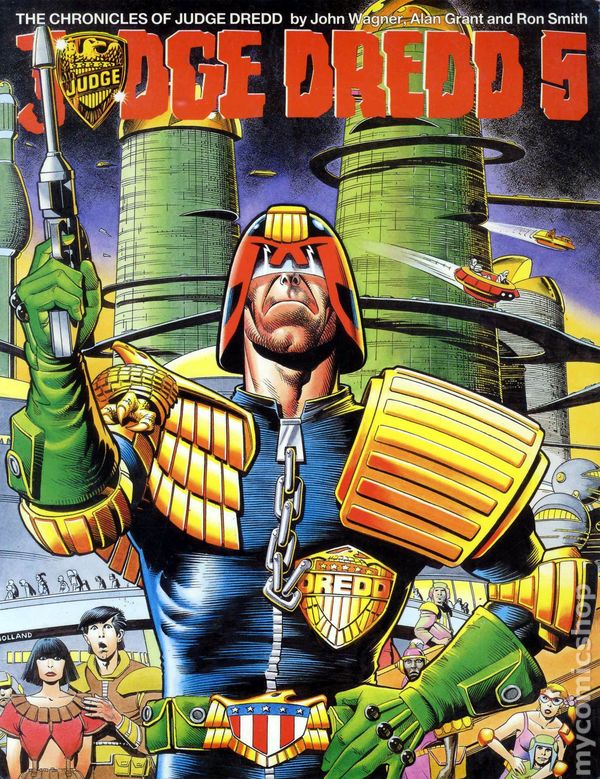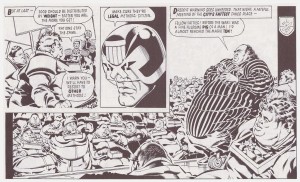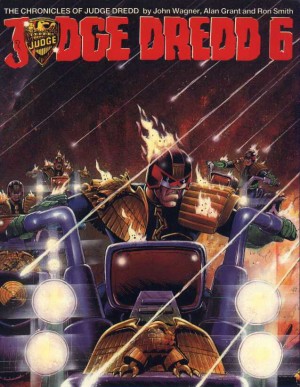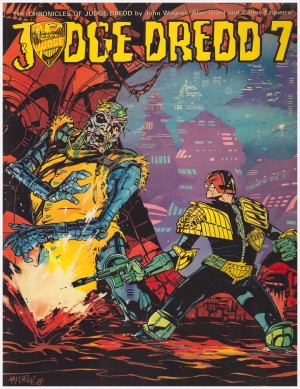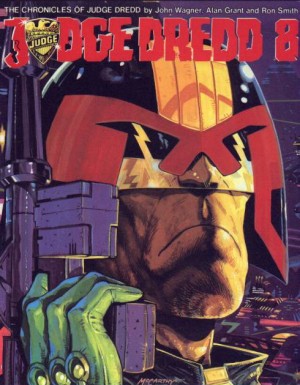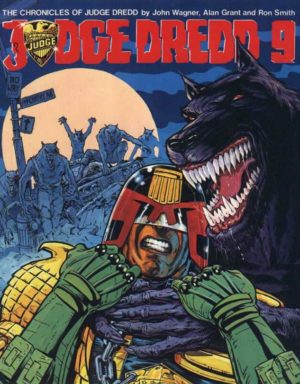Review by Frank Plowright
Artist Ron Smith had shared volume 3 of Titan’s Dredd reprints with Mike McMahon, but 5 and 6 were all Smith.
Illustrating his first Judge Dredd strip in 1979, Smith’s clear storytelling would eventually pull him off the comic and onto the Judge Dredd newspaper strip, but for several years beforehand he was the most prolific and reliable of the regular Dredd artists. In Thrill-Power Overload, David Bishop’s engaging history of 2000AD, Alan Grant recalls Smith’s response to being asked how he produced pages so quickly: “It’s easy. It depends on how much money I’m being paid. I know my page rate and I know how much I want to earn per hour, so I set my alarm clock and start drawing a page. When the alarm goes off the page is finished.” Assuming Smith wasn’t joking, it’s not apparent from his Dredd pages. Most are a masterclass in clarity, never sacrificing detail and spot on in capturing the strip’s humourous elements without ever over-egging the joke.
The majority of the strips collected here focus on a favourite theme of writers John Wagner and Alan Grant, exaggerating the eccentricities of society, broadly commenting on real world failings and consumer obsession. There are the grossly overweight demanding levels of food commensurate with their needs, the punk band cosmetically altered to become ugly, and redundant humans fighting back against the droids who’ve replaced them. Even among the ostensibly more straightforward crime strips with a gimmick such as ‘The Invisible Man’, there’s the diversion of Edwin the Confessor, perpetually claiming responsibility for the crimes of others. As ever, the city blocks bear an eclectic choice of branded names: Chubby Checker, Harriet Beecher Stowe, Benjamin Spock, Charlton Heston and Carlos Santana join the roll of infamy.
The volume closes with the introduction of the surprisingly durable Marlon ‘Chopper’ Shakespeare, here a death-defying graffiti artist who takes umbrage when The Phantom consistently upstages him. In this story seemingly just another of the Mega-City One citizens onto whom the spotlight briefly shines, he’d graduate to skyboarding, and eventually his own series
